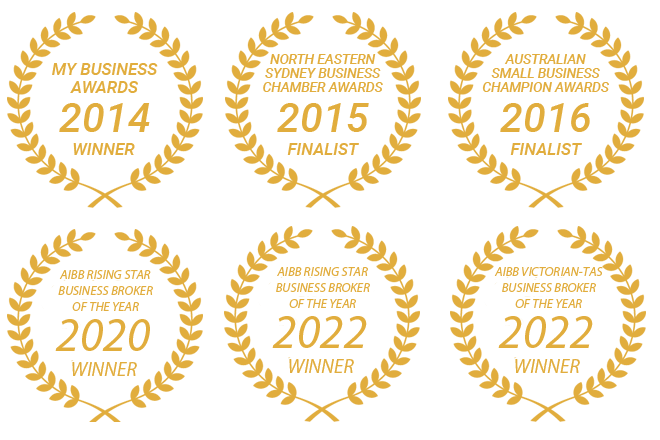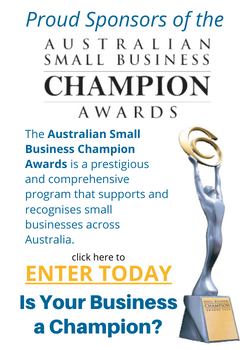Business Valuations Sydney :: Business Valuations By Certified Business Valuers
Business Valuations Sydney – Melbourne – Brisbane – Canberra – Adelaide – Perth – Newcastle
: Services provided by Xcllusive Business Agency
Business Valuations
Sydney – Melbourne – Brisbane – Canberra – Adelaide – Perth – Newcastle
: Services provided by Xcllusive Business Agency
call
Valuations need more than numbers
They need experience and understanding. Different businesses will demand different valuation methods
What follows are some brief descriptions of the Valuation methods that are most commonly used for valuing small to medium sized private businesses. One or more of these methods are used depending on the nature and size of your business. As you may have read on other pages of this site, Valuation is just as much an art form as it is a science, and experience more than anything tends to make our decisions for us.
Method 1: Asset Based
Method 2: Capitalised Future Earnings
Method 3: Market Based
Method 1: Asset Based
This method focuses on the assets net of the liabilities. It does not take into account the profitability of the business and is the most appropriate method for under performing businesses, new businesses or any business where the sale of the assets outweigh the sale of the business as a going concern.
Method 2: Capitalized Future Earnings
The value of the business is determined by the future profits that the busienss will generate to its owners. For most private businesses, Capitalised Future Earnings is the valuation method of choice and takes into account the Adjusted Profits and Return On Investment.
Before looking at this method, we should clarify the basis for which a Return Of Investment is calculated. The Return on Investment (ROI) relies on the level of internal and external risks associated with a business, and assumes that the lower the risk, the lower the ROI, and resultantly the greater the value of the business. As investments go, businesses are generally considered riskier than government bonds, property investment, shares etc, and as a result the lowest ROI achievable is approximately 20%. Beyond that figure an ROI of between 20% and 100% is calculated based on the several risk factors that may be associated with the business.
For example, Paul both owns and manages his manufacturing business. If he were to sell, any buyer would see the business as being heavily reliant on Paul. They would be asking questions like “if Paul leaves, will the business be dramatically affected”. This situation represents a high risk and as such the ROI will be considerably higher than if somebody else was managing the business.
Now that we understand the concept of how the ROI is established, the following equation should make more sense. Essentially, by dividing the businesses adjusted profits by the ROI we come to the price of the business.
Adjusted Profit / Return of Investment (%) = Business Price
Example
Paul wants to sell his manufacturing business. He currently manages, but the assumption is that a new manager will be installed when the business is sold. The following table serves to calculate his Adjusted Profits.
| 2015 | 2016 | 2017 | |
| Sales | $1,100,000 | $1,400,000 | $1,500,000 |
| Cost Of Goods | $800,000 | $1,000,000 | $1,100,000 |
| Gross Profit | =$300,000 | =$400,000 | =$400,000 |
| Expenses | $220,000 | $300,000 | $300,000 |
| Other Expenses | $7,000 | $4,000 | $2,000 |
| Net Profit | =$73,000 | =$96,000 | =$98,000 |
Adbacks | |||
| Sales Manager Wage Adjustment | $70,000 | ||
| Owners Wage and Benefits | $160,000 | ||
| New Managers Wage | -$100,000 | ||
| Total Adbacks | $130,000 | ||
Total Adjusted Profits | =$228,000 |
$228,000 /33%=$690,909.09
Adjusted Profit ROI Business Price
Method 3: Market Based
This method relies very heavily on the recent sales of similar businesses. For example, lets say that Ryan wants to sell his food distribution business. Within his city, two similar businesses have sold for 3.2 times and 2.8 times their adjusted profits within the last year. Based on this information the valuer will closesly analyse the characteristics of both businesses and compare them to Ryans business in order to determine the profit multiplier to be used.
It is commonly accepted that this method if done properly is the most persuasive and accurate. The downfall of this method is that market based information, due to the confidential nature of business sales, are sometimes hard to obtain.
Whichever Valuation method used, market sales history is usually taken into account. Comparable sales is the most trustworthy element of a good valuation. Remember; the market is the market.
When it comes down it, chances are, the Valuation you receive will involve elements of all of the above methods resulting in the truest opinion as to the value of your business.
Enquire Now About An Expert Business Valuation - Call Us Today on:
1800 825 831
or...
Fill In The Form Below and One Of Our
Experienced Team Members Will Contact You:
VALUATION




WHAT OTHERS ARE SAYING ABOUT US…
***The most honest and intuitive organisation***
“I can honestly say, as a person who has now sold three businesses in the past 8 years, Xcllusive is far and away the most honest and intuitive organisation that I have had the pleasure of dealing with.”
Leon J. – Import and Wholesaling business
Valuations need more than numbers
They need experience and understanding. Different businesses will demand different valuation methods
What follows are some brief descriptions of the Valuation methods that are most commonly used for valuing small to medium sized private businesses. One or more of these methods are used depending on the nature and size of your business. As you may have read on other pages of this site, Valuation is just as much an art form as it is a science, and experience more than anything tends to make our decisions for us.
Method 1: Asset Based
Method 2: Capitalised Future Earnings
Method 3: Market Based
Method 1: Asset Based
This method focuses on the assets net of the liabilities. It does not take into account the profitability of the business and is the most appropriate method for under performing businesses, new businesses or any business where the sale of the assets outweigh the sale of the business as a going concern.
Method 2: Capitalized Future Earnings
The value of the business is determined by the future profits that the busienss will generate to its owners. For most private businesses, Capitalised Future Earnings is the valuation method of choice and takes into account the Adjusted Profits and Return On Investment.
Before looking at this method, we should clarify the basis for which a Return Of Investment is calculated. The Return on Investment (ROI) relies on the level of internal and external risks associated with a business, and assumes that the lower the risk, the lower the ROI, and resultantly the greater the value of the business. As investments go, businesses are generally considered riskier than government bonds, property investment, shares etc, and as a result the lowest ROI achievable is approximately 20%. Beyond that figure an ROI of between 20% and 100% is calculated based on the several risk factors that may be associated with the business.
For example, Paul both owns and manages his manufacturing business. If he were to sell, any buyer would see the business as being heavily reliant on Paul. They would be asking questions like “if Paul leaves, will the business be dramatically affected”. This situation represents a high risk and as such the ROI will be considerably higher than if somebody else was managing the business.
Now that we understand the concept of how the ROI is established, the following equation should make more sense. Essentially, by dividing the businesses adjusted profits by the ROI we come to the price of the business.
Adjusted Profit / Return of Investment (%) = Business Price
Example
Paul wants to sell his manufacturing business. He currently manages, but the assumption is that a new manager will be installed when the business is sold. The following table serves to calculate his Adjusted Profits.
2015 | 2016 | 2017 | |
Sales | $1,100,000 | $1,400,000 | $1,500,000 |
Cost Of Goods | $800,000 | $1,000,000 | $1,100,000 |
Gross Profit | =$300,000 | =$400,000 | =$400,000 |
Expenses | $220,000 | $300,000 | $300,000 |
Other Expenses | $7,000 | $4,000 | $2,000 |
Net Profit | =$73,000 | =$96,000 | =$98,000 |
Adbacks | |||
Sales Manager Wage Adjustment | $70,000 | ||
Owners Wage and Benefits | $160,000 | ||
New Managers Wage | -$100,000 | ||
Total Adbacks | $130,000 | ||
Total Adjusted Profits | =$228,000 |
$228,000 /33% = $690,909.09
Adjusted Profit ROI Business Price
Method 3: Market Based
This method relies very heavily on the recent sales of similar businesses. For example, lets say that Ryan wants to sell his food distribution business. Within his city, two similar businesses have sold for 3.2 times and 2.8 times their adjusted profits within the last year. Based on this information the valuer will closesly analyse the characteristics of both businesses and compare them to Ryans business in order to determine the profit multiplier to be used.
It is commonly accepted that this method if done properly is the most persuasive and accurate. The downfall of this method is that market based information, due to the confidential nature of business sales, are sometimes hard to obtain.
Whichever Valuation method used, market sales history is usually taken into account. Comparable sales is the most trustworthy element of a good valuation. Remember; the market is the market.
When it comes down it, chances are, the Valuation you receive will involve elements of all of the above methods resulting in the truest opinion as to the value of your business.
Enquire Now About An Expert Business Valuation - Call Us Today on:
1800 825 831
or...
Fill In The Form Below and One Of Our
Experienced Team Members Will Contact You:
VALUATION




WHAT OTHERS ARE SAYING ABOUT US…
***The most honest and intuitive organisation***
“I can honestly say, as a person who has now sold three businesses in the past 8 years, Xcllusive is far and away the most honest and intuitive organisation that I have had the pleasure of dealing with.”
Leon J. – Import and Wholesaling business







